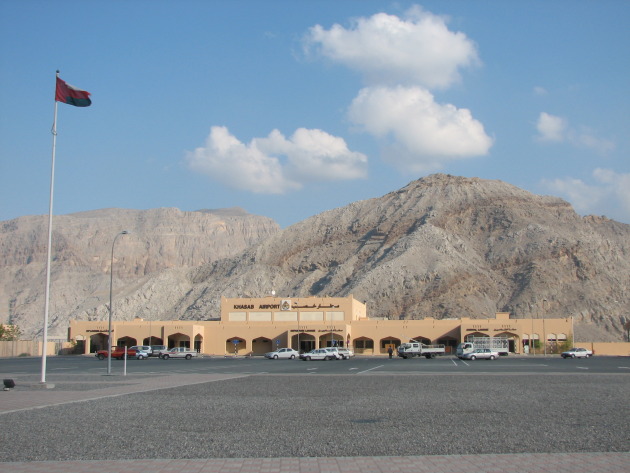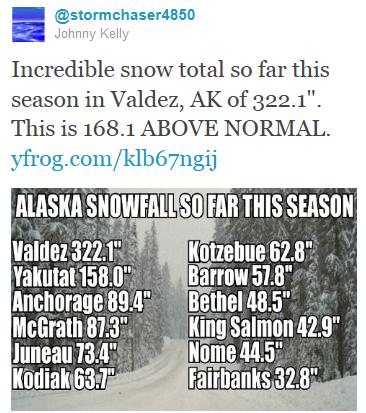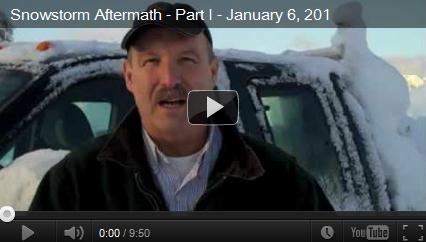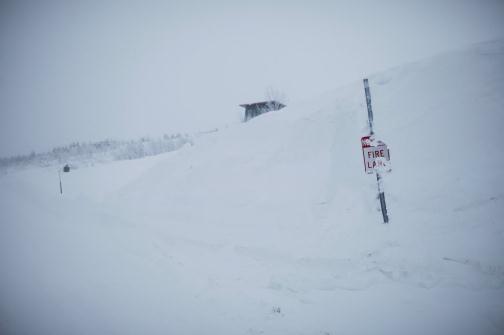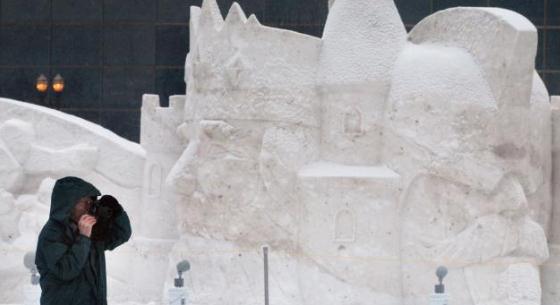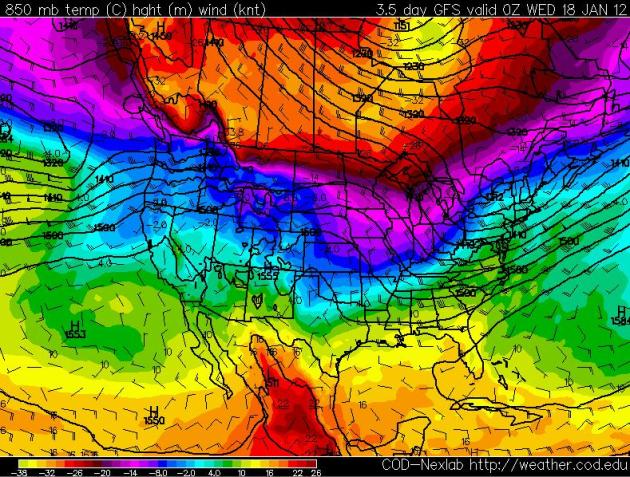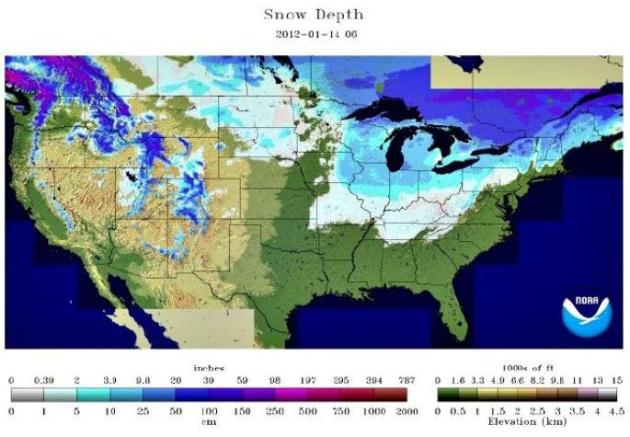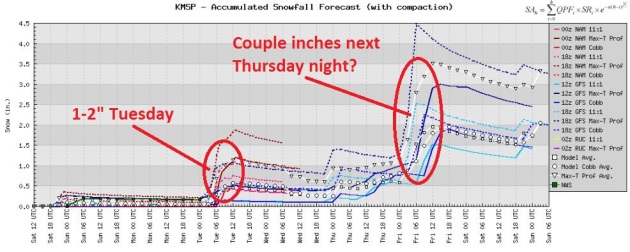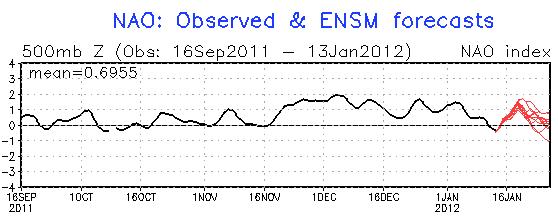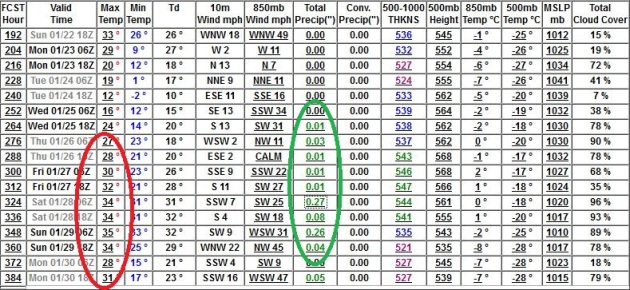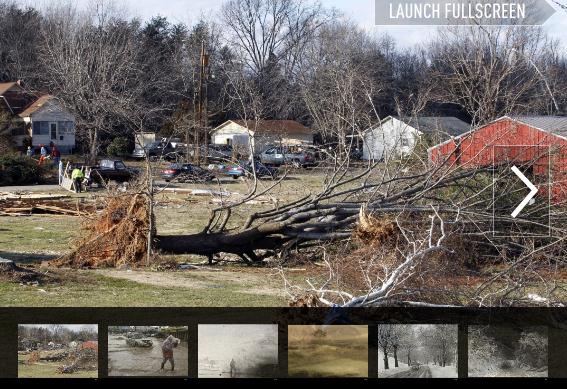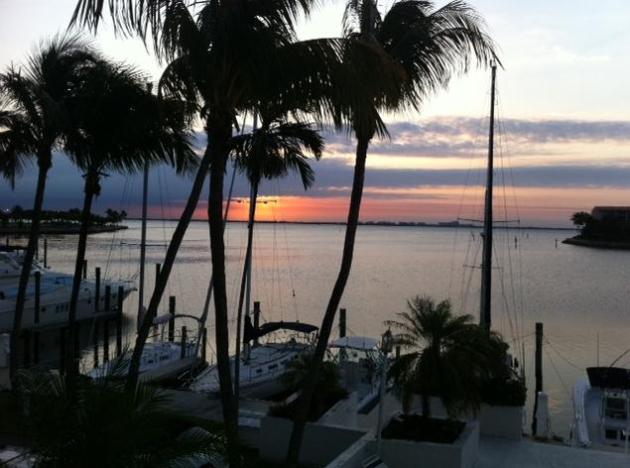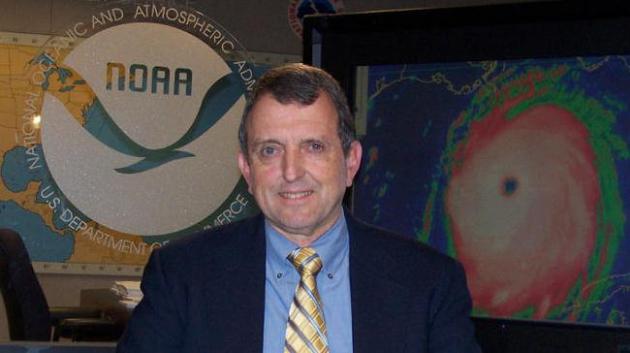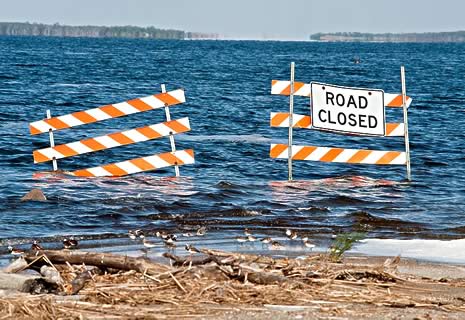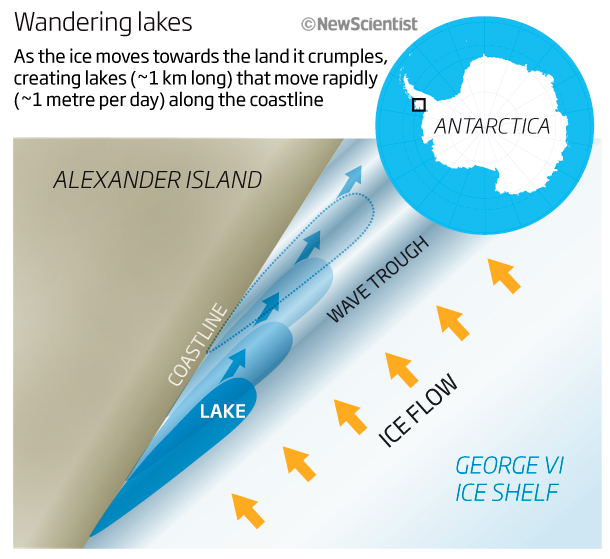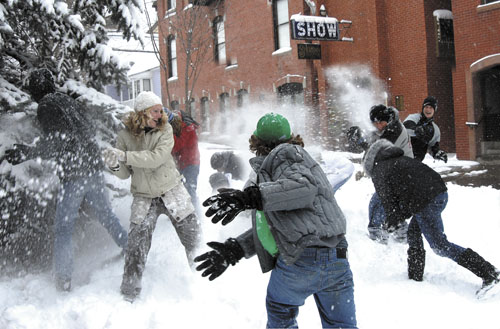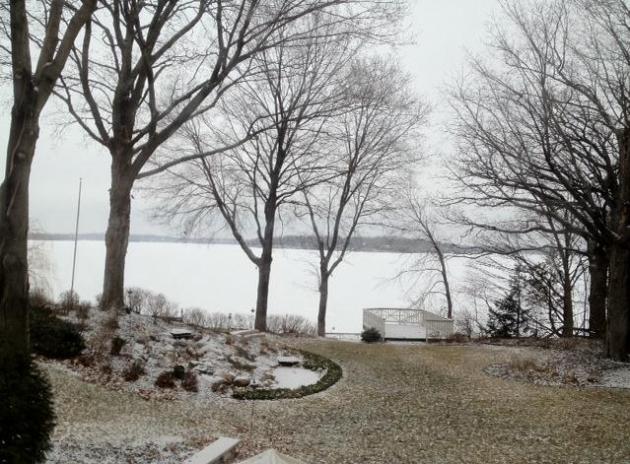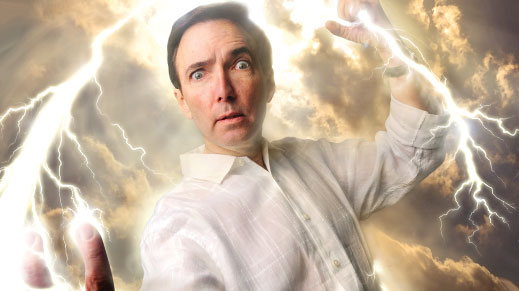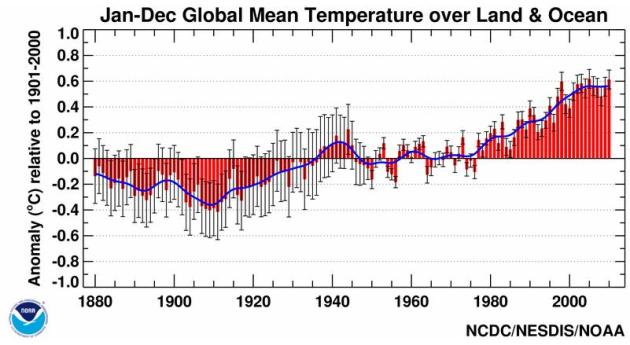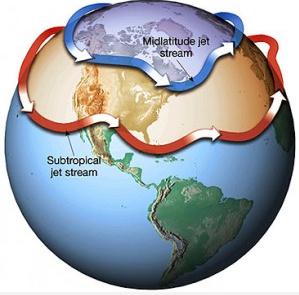Snow on the ground in the Twin Cities as of January 15:
2012:
1"
2011:
15"
2010:
10"
2009:
7"
2008:
5"
2007:
4"
2006:
1"
107 F. "low temperature" at Khasab Airport, Oman, on June 27, 2011 - new worldwide record for warmest nighttime low temperature. Airport photo courtesy of
panoramio.com. Details below.
33.5% of the USA covered in snow, up from 19% one week ago. Average for January 15: closer to 50%
322.1" snow at Valdez, Alaska, 168.1" above average, to date. Photo above courtesy of AP. More details below.
The Boat Show is coming to the Minneapolis Convention Center the end of next week. Can spring be far behind? You 'betcha! Details at The Boat Show's
Facebook page.
St. Paul Winter Carnival runs from January 26 to February 5. Check out the
web site. Right now I don't see any bitter cold during that period, in fact the chance of snow may increase as we head into early February. Then again, at the rate we're going, that may be wishful thinking. Details below.
2011: 10th warmest year on record, worldwide, but warmest on record with a La Nina underway. Details below.
7 new national, all-time heat records around the world in 2011. Details from Dr. Jeff Masters below.
40% Arctic ice has shrank roughly 40% from 1980 to 2007. The Arctic is warming twice as fast as the rest of the Earth.
"
Those who can...do. Those who can't...criticize (or consult)." - author unknown
Mind-Numbing Snowfall Amounts. Thanks to Johnny Kelly for sharing this tweet. 322.1" of snow so far in Valdez? Amazing. Schoos were closed late last week, for the first time in recent memory - not because school buses couldn't get through - but because officials were concerned about record amounts of snow on school rooftops, and the ongoing risk of roof collapses.
Where Winter Really Set Up Shop.
Phillyweather.net has more details on the mind-boggling amounts of snow that have smothered Alaska in recent weeks: "
Snow on steroids, if you will. The root cause has been the position of a cold trough over Alaska this winter, which has kept them in the proverbial freezer as the polar vortex has been over them much of the cold season. This has set the storm track up so storms track just south of Cordova and Valdez, keeping them cold enough but also in the right position to bring a lot more snow than usual. Anchorage is on pace for its snowiest winter on record and is approaching 100" of snow for the winter so far, more than the 61" of snow they picked up last winter. Alaska has been the one place in the United States where the pattern has locked and loaded for winter chill and snow...the rest of us as a byproduct of that are mild and relatively snowless so far this winter."
Buried In Snow. Some of the photos and videos coming out of Alaska are pretty incredible: "
Snowfall outlines the familiar shape of a VW Beetle parked in Anchorage, Alaska on Thursday, Jan. 12, 2012. Anchorage has received an official 81.3 inches of snow at the airport measuring station as of Tuesday. Meteorologist Shaun Baines said that makes it the snowiest period for Anchorage since records have been kept. (AP Photo/The Anchorage Daily News, Bill Roth)."
Where All The Snow Has Gone. Oh, to have a snowplow business...in Alaska this winter: "
A road sign in Anchorage's Glen Alps neighborhood is dwarfed by a wall of snow almost eight feet tall on Thursday, Jan. 12, 2012. The National Weather Service is predicting a total snowfall of 8 to 16 inches today, putting Anchorage on track to have the snowiest winter on record. (AP Photo/Loren Holmes)."
Serious Lake Effect Snows. Snow lovers now have a favored destination: Gile, Wisconsin, with nearly 3 feet of (mostly lake effect) snow on the ground. More details from WeatherNation: "
Check out a sampling of snow totals from the past 24 hours! Gile, WI takes the cake with nearly 3-feet of heavy snow!! The lake effect snow machine continues to crank in some coastal communities along the Great Lakes, with the heaviest expected between Cleveland, OH and Jamestown, NY."
Winter Carnival Cancels Snow Sculpture Contest. Welcome to an "all-or-nothing" winter. Either it snows 20 feet (Alaska) or you're faced with brown ground and unstable ice (Minnesota).
The Star Tribune reports on long faces in St. Paul: "
The snowless, brown State Fairgrounds have put a halt to the St. Paul Winter Carnival's annual snow sculpture contest. On Saturday, organizers announced that this year's contest, which was slated for Jan. 29 through Feb. 6, is a no-go thanks to no snow. "It's unfortunate we're not able to do it this year, but we needed a lot of snow," said Steve Gurney, an organizer with the Imperial Order of Fire and Brimstone, a group of past Winter Carnival Vulcans who put on the contest. In past snow-lacking years, organizers have hauled in snow to keep the event going. Gurney said that they spoke with area recreational areas to haul in snow again this year, but the snowless fairgrounds would have needed four dump trucks hauling snow for three days to make up for this year's unseasonable weather."
A "Glancing Blow" Of Arctic Air Next Week. Yes, we'll experience about 2-3 fairly uncomfortable days next week with highs in single digits, maybe 2 nights at or below zero (for the first time all winter). But the core of the coldest air, the really nasty -20 to -40 F. air, sails off a few hundred miles north of Minnesota. I suspect we'll pick up a couple of subzero nights in February, but January is the month where (historically) we experience the longest, coldest stretches of subzero fun. This year - I just don't see it.
7 National All-Time Heat Records Set In 2011. In 2010 a total of 20 different nations set all-time record highs around the word. Dr. Jeff Masters has some remarkable statistics in his
Wunderblog. Here's a brief excerpt: "
Here, then, are the most most notable extreme temperatures globally in 2011, courtesy of weather records researcher Maximiliano Herrera:
Hottest temperature in the world in 2011: 53.3°C (127.9°F) in Mitrabah, Kuwait, August 3.
Coldest temperature in the world in 2011: -80.2°C (-112.4°F) at Dome Fuji, Antarctica, September 18.
Hottest temperature in the Southern Hemisphere: 49.4°C (120.9°F) at Roebourne, Australia, on December 21.
Coldest temperature in the Northern Hemisphere: -67.2°C (-89°F) at Summit, Greenland, March 18. This is also the coldest March temperature ever recorded in the Northern Hemisphere.
Hottest undisputed 24-hour minimum temperature in world history: A minimum temperature of 41.7°C (107°F) measured at Khasab Airport in Oman on June 27."
USA Snowcover Up To 33.5% Last week's storm dumped significant snow from eastern Iowa and Wisconsin into northern New England, bringing the percentage of America experiencing any level of snow up to 33.5% - the highest amount so far in January. Map courtesy of NOAA's
NOHRSC division.
Snowfall Outlook For Upper Midwest? Dribs And Drabs. The forecast through midday Thursday calls for little more than an inch or two of accumulation for parts of Minnesota and Wisconsin (best chance early Tuesday as much colder air arrives). This map extends through midday Thursday - long range guidance is hinting at a couple inches Thursday night into Friday morning. Again - don't hold your breath. The atmosphere just doesn't want to snow this year.
Bleak Times For Snow Lovers. How many different (annoying) ways can I say: "little snow in the outlook"? All the models bring a light snowfall into town Monday night into Tuesday morning. With temperatures in single digits the snow/rain ration may be pushing 30/1, so it won't take much moisture to get a quick couple inches of fluff. Another chance comes Friday as milder air pushes back into Minnesota.
Looks Like Winter Again. Here's a photo from Hayward, Wisconsin, after the recent 4-6" snowfall. The farther north/east you travel away from the Twin Cities metro, the better the odds of running into significant snow on the ground.
Still No Strong (Negative) Signal In AO and NAO. Meteorologists look at various forcings ranging from La Nina to blocking patterns and "oscillations", including the Arctic Oscillation (AO) and North Atlantic Oscillation (NAO). Both of these have been strongly positive in recent months, reaching record values at times - meaning westerly winds so strong/persistent that bitter Siberian air has been unable to penetrate southward to the USA. Last week it appeared these indices might be going negative, meaning a weakening of the westerlies, and a better chance of cold (and snow). But now the outlook is murky; both AO and NAO fall to near zero, but I still don't see a strong, negative trend which might imply a return of sustained cold and snowy weather to Minnesota. More from NOAA's CPC
here.
Looking Ahead: Mild End To January? After bottoming out next week (I'm going out on a limb predicting this will be the coldest week of the winter, but that's my gut) a zonal, Pacific flow resumes the last week of January, meaning more 30s, even a few 40s. But I'm seeing more "troughing" in the western USA, which may create a more favorable environment for snow as we head into early February. Wishful thinking? We'll see - but I think/hope we'll pick up a few significant snowstorms in February and March. For the sake of not only snow lovers, but our ongoing drought, soil moisture and Minnesota farmers/gardeners - I sure hope we do.
Last Week Of January: Milder (And Stormier?) Kind of ironic - just about the time we finally get some moisture into Minnesota it may be warm enough aloft for a rain/snow mix, the best chance of precipitation between January 26-29. That's way out on the horizon, but note the Max Temps predicted for the last week of January: with the exception of a fleeting cool-down around Jan. 24, highs are consistently in the 20s and 30s - we could even sample 40 the last few days of the month.
What Will February 2012 Bring? I have no idea. That's the honest answer - my crystal ball is malfunctioning. But this winter reminds me (a lot) of 2002. That's the year we only had 2 subzero lows - it was amazingly mild. The graphic above shows a review of
February, 2002, courtesy of the Minnesota State Climate Office. As you can see temperatures trended well above average with numerous 40s, even some 50s. I'm not saying we'll experience a February quite that unusual, but (historically) Minnesota's coldest weather comes in January and early February. My hunch: a continuation of drier and milder than average. Don't buck the trends.
Extreme Weather Of The Week (Photos). Huffington Post has a good recap of another wild week of weather, nationwide: "
This week's weather was definitely extreme in some areas. In the U.S. Midwest, the first major snow storm of the winter left commuters facing a sloppy morning ride. Ski areas and winter-dependent businesses welcomed the snow, however. According to Scientific American, this winter's mild temperatures and lack of snow can be blamed on the North Atlantic Oscillation and its effect on the jet stream. Alaska, however, has had no shortage of snow. Anchorage is on pace for the snowiest winter since record-keeping began. This winter, the city has already received over 80 inches of snow. The town of Cordova, Alaska has had to order more snow shovels to dig out from over 15 feet of snow that has fallen recently."
Tornado Tourism: New Map Guides Visitors To The Sights Of The Storm.
KY3.com in Springfield, Missouri has more details: "
JOPLIN, Mo. - In the days after the storm, city officials and devestated homeowners urged gawkers to stay away. There was a concern so many tourists could get in the way of rescue and recovery operations. But now, sightseers are getting the welcome mat- make that the welcome map. The Joplin Convention and Visitors Bureau is distributing a new ‘tornado tourism’ map. It can be picked up, for free, at several local hotels and tourism centers. “It is natural for people to want to come and see what’s happened,” said resident Kristen Moore, whose home suffered damage when the EF5 twister tore through town."
A Miami Sunrise. Yes, a couple of days in south Florida might cure me. Thanks to meteorologist Bay Scroggins, our Miami correspondent, for reminding us what palm trees look like.
Director Of The National Hurricane Center, Bill Reed, To Retire.
NBCmiami has the story: "
Bill Read, director of the National Hurricane Center located in Miami, announced Friday that he would retire on June 1 in a letter to staff and management. In the letter, Read, 62, explained that he chose his retirement date to be in the midst of hurricane season because there were opportunities he wanted to pursue in the summer but also because he wanted his successor to jump right into the job. “I believe it would be a better transition for a new director to first work the hurricane season, then tackle the important off season activities armed with a season’s experience,” he wrote. "
Insurance Companies Raising Rates For Homeowners Insurance.
The Seattle Times has the story: "
NEW YORK — Allstate, Travelers and State Farm are among insurers raising homeowners' rates after damage from natural disasters defied industry projections. Allstate, the No. 2 U.S. home insurer, boosted prices for its namesake brand of home policies by 5.6 percent in the nine months through Sept. 30 and has said more increases are coming. Travelers is raising rates after re-evaluating U.S. storm risk. State Farm, the largest U.S. home insurer, has charged homeowners more nationwide for three straight years."
Unusually Chilly Stratosphere Behind 2011's Record Arctic Ozone Hole. NOAA's
ClimateWatch Magazine has the story: "
Check the fine print on many cans of hairspray or shaving cream these days, and you’ll probably find a reassurance that the product you are holding contains “No CFCs or chemicals known to harm the ozone layer.” Located in the stratosphere, the ozone layer protects life on Earth from the harmful effects of ultraviolet radiation. To stop ozone destruction, chemical manufacturers phased out the production of CFCs (short for chlorofluorocarbons) over the past two decades. So why is it that this past spring, scientists observed the largest, most severe ozone destruction ever witnessed in the Arctic since records began in 1978? In part, it’s because CFCs stick around in the atmosphere for a very long time. But the maps above reveal the main reason this winter’s Arctic ozone loss was so much worse than it normally is: unusually persistent cold temperatures."
Mystery Of The Moving Antarctic Lakes.
NewScientist has an intriguing story: "
RIVERS and mountains can move given enough time, but they don't normally move half a kilometre every year. Yet that is exactly what is happening to a bizarre group of Antarctic lakes. And the lakes seem to be moving far faster than the ice shelf on which they sit. The 11 lakes are on the edge of the George VI ice shelf, a banana-shaped sheet of floating ice sandwiched between the Antarctic Peninsula and Alexander Island. They were first spotted in the 1970s but it was only last year that their wanderlust was identified."
5 Ways For Start-Ups To Grow Their Brands On Twitter. Here's a timely article from
techcrunch.com: "
Last week I began an effort to answer the questions I get asked most frequently by entrepreneurs, starting with how to create an early-stage pitch deck. Today, I address a topic as relevant for early stage startups (vying for consumer attention) as it is for more mature companies (focused on customer relationships): How to grow your brand on Twitter? Twitter is the ultimate marketing platform. But the scale of Twitter activity is so extraordinary (250 million tweets per day) that it is quite easy to get lost in the noise… particularly if you are an early-stage startup and/or an emerging brand. Separating yourself from the masses really begins with the recognition that Twitter is first and foremost a platform for conversation. If you believe that, you avoid the mistake most brands make: treating Twitter as a mechanism to push content rather than create engagement."
The 12 Coolest Things We Saw At CES.
Time Techland has a review: "
#1). "Why it’s cool: At 5.3 inches, it’s either a huge Android phone or a pocketable Android tablet, yet it’s only about as thick as the iPhone. Aside from its size, the Galaxy Note stands out by attempting to resurrect the ill-fated stylus. This one’s much more than a simple plastic stick, though: Its pen strokes are detailed enough for complex sketches. As Project Runway winner Anya Ayoung-Chee told me, “I love it. If I had this, I really would be able to use it for all of my sketching.”
Notable specs: 1280×800-resolution screen; 4G LTE connection; corporate security features."
Consumption Makes Us Sad? Science Says We Can Be Happy With Less. This story struck a nerve. It's amazing how much (crap) we all accumulate over time; I don't know about you - but I feel liberated when I get rid of some of that stuff, especially when I can donate it.
The Daily Beast has the story: "
How much stuff is enough stuff? At what point should we worry a bit less about getting and spending and devote more time and energy to other things? As government austerity measures, shrinking incomes, and postholiday bills make us feel the squeeze on our wallets, it’s an especially good time to ask questions like these. The holidays should be putting us in mind to savor our close relations with friends and family and to ask ourselves what we can do to ease the burdens of others. Instead they seem mostly to add stress. Gift buying adds to our to-do lists even though our plates are already overfull of other responsibilities and our bank accounts, in these hard times, are perilously close to empty. The holidays should be a time of joy, but they seem, increasingly, to be a time of misery." Photo credit
here.
Fox Affiliate Weatherman Fired Over Real-Life "Hangover" Tale In Playboy. I know John Bolaris - he's actually a very solid meteorologist, in my humble opinion. Sorry to see him swept up in this sordid tale. He has (male model) good looks, and (allegedly) this may have gotten him into a bit of trouble.
The Hollywood Reporter has the sordid details: "
Philadelphia weatherman John Bolaris lost $43,712.25, his job and, arguably, his dignity from one fateful trip to Miami Beach. Following a real-life version of Warner Bros.’ The Hangover films, Bolaris shopped his story -- at least what he could remember of it -- to several outlets including Playboy, which published a salacious tell-all detailing how the weatherman was drugged by the Russian mob while on vacation. Bolaris was suspended by his employer, Fox 29, for allegedly leaking the story to the Philadelphia Daily News. In late December, he was officially let go...." Photo above right courtesy of
philly.com.
* Gawker.com has a more salacious version of the story
here. A cautionary tale indeed.
"
The aging process has you firmly in its grasp if you never get the urge to throw a snowball." - Doug Larson
"Doppler Douglas"
True confession: I didn't invent Doppler. I wish I had. Not sure where that rumor came from, but it's kind of funny how many people come up to me in public and thank me for Doppler. The reality: I've been fascinated by the intersection of weather and technology, blessed to be able to attract smart programmers able to turn my hair-brained daydreams into actual products & services. For the record, we launched 3-D radar for TV stations (EarthWatch) and Doppler/maps on cell phones (Digital Cyclone). My hunch: soon everyone will have a personalized, "always-on" weather channel for their TVs, tablets and smartphones. Stay tuned.
The last 2 years have been startling. I'm seeing things I never thought I'd see in my career: a huge spike in records. It's as if Mother Nature picked up a remote control, cranked up the volume, and put America's weather extremes on fast-forward.
Next week will probably be the coldest of winter, a winter that has been downright tame. Expect 3 days of single digit highs, maybe 1 or 2 nights below zero. Not so bad. The approach of arctic air sets off 1-3 inches of snow Tuesday; black ice may be an issue. But no prolonged subzero air is in sight.
Westerly winds aloft return in 1 week; more 30s the last week of January. A stormier, potentially snowier pattern for early February? A distinct possibility. Then again we're in a drought. Don't get your hopes up too high."
"Football is, after all, a wonderful way to get rid of your aggressions...without going to jail."
- Heywood Hale Brown
Climate Stories...
Global Temperature Trends. No, I don't see any evidence of warming. It's all in your imagination. Someone has cooked the books - it's a global conspiracy, an attempt to enrich Al Gore and climate scientists with more research grants! Sorry, I'm temporarily off my meds. NOAA's
NCDC (National Climatic Data Center) has more details on the graph above: "
Land surface temperatures are available from the Global Historical Climate Network-Monthly (GHCN-M). Sea surface temperatures are determined using the extended reconstructed sea surface temperature (ERSST) analysis. ERSST uses the most recently available International Comprehensive Ocean-Atmosphere Data Set (ICOADS) and statistical methods that allow stable reconstruction using sparse data. The monthly analysis begins January 1854, but due to very sparse data, no global averages are computed before 1880. With more observations after 1880, the signal is stronger and more consistent over time."
Global Warming: Revenge Of The Atmosphere. Are changes in the Arctic resulting in lighter winds over North America, slowing down weather systems, increasing the potential for prolonged floods (or droughts?)
The Summit County Citzens Voice has the story:
"With Arctic sea ice shrinking fast — losing 40 percent of its mass between 1980 and 2007 — widespread effects on climate and weather are inevitable, according to Jennifer Francis, with Rutgers University Institute of Marine and Coastal Sciences. “How can it not affect the weather? It’s such a huge loss in the Earth’s system,” Francis said, speaking Jan. 13 and the Glenn Gerberg Weather and Climate Summit in Breckenridge, Colorado. Discussing the link between rapid climate changes in the Arctic and weather patterns in mid-latitudes, Francis said her most recent research points to a direct link between changes over the Arctic and mid-latitude weather patterns driven by the jet stream. "
A Short-Cut To Restraining Climate Change? The story from
The Energy Collective: "
My RSS news feeds are simply bursting at the seams with the news that scientists have figured out that by concentrating on non-CO2 greenhouse-effect emissions we can get a pretty big and speedy bang for the buck. Can we slow down the victory parade for just a moment and think about this? A pretty representative article on the development comes from Anfrew Freedman at Climate Central, Groundbreaking New Study Shows How to Reduce Near-Term Global Warming: Let’s face it — the prospects for containing global climate change by slashing emissions of greenhouse gases, such as carbon dioxide, are looking rather bleak these days. International treaty talks are proceeding at a snail’s pace, and after dipping during the global recession, emissions of carbon dioxide (CO2) — the most important greenhouse gas — from the energy sector climbed to record levels this year, and studies show that the effects of climate change, such as sea level rise, are now expected to be much worse than previously thought."
Where Is The Greed In Climate Change Markets? Huffington Post has more details: "
Investors representing staggering sums of money gathered at the headquarters of United Nations to hear a day of discussions on climate risk and energy solutions this week. The packed room included bankers, pension fund executives, policy-makers and the usual crowd of climate change professionals largely made up of consultants that cycle in and out of public and private organizations wearing different hats but often propounding the same message. Their message is one that seemed welcome in the last decade -- that markets could be harnessed to solve climate change problems, that a price on carbon emissions would be good not just for health but for businesses currently facing (in the oft-quoted Nicholas Stern phrase) "a result of the greatest market failure the world has seen."
Climate Change Activists Need To Talk About Population Too. National Geographic reports: “
The environment does not exist as a sphere separate from human actions, ambitions, and needs, and attempts to defend it in isolation from human concerns have given the very word ‘environment’ a connotation of naivety in some political circles.” These words come from the foreword of “Our Common Future: Report of the World Commission on Environment and Development,” a landmark United Nations report that was written when the world’s population reached five billion. The report triggered the 1992 “Earth Summit” in Rio De Janeiro and a number of United Nations treaties and agreements all focusing on sustainable development."

